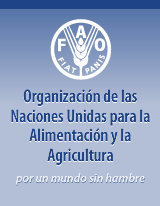Los estudios de caso
Socio-economic evaluation of community-based forest enterprise development using the market analysis and development approach in community forestry in the Gambia (2011). Since 2000, the FD has introduced the Market Analysis & Development methodology in the 3 Regions of the country for use in the management of Community Forests the MA&D was adopted in 22 CFCs as a sustainable forest management and conservation tool. The purpose of this socio-economic evaluation of MA&D impacts is to determine the extent to which participating villagers are benefiting from application of the MA&D approach in the development of their forest based enterprises, as compared with those villagers not employing the MA&D CF methodology.
Empowering communities through forestry: Community-based enterprise development in the Gambia (2005).The experience in participatory forest management in the Gambia has shown that once local communities have recognized the value of trees and forests, they will develop a vested interest in their protection as permanent sources of income and/or livelihoods. This case study describes how the Market Analysis and Development approach helped the local people to identify potential products and develop markets to provide income and benefits without degrading their resource base.
Community Forestry Enterprises: A case study of the Gambia (2005).This study is based on the experience on community-based forest enterprise development and on the existing enabling environment in the Gambia. It was done on the request of Forest Trends, in order to contribute to a wider study issued by the International Tropical Timber Organization (ITTO) on Community-based Forest Enterprises in Tropical Forests countries (Status and Potential). It complements the Gambian Case Study "Empowering communities through forestry: Community-based enterprise development in the Gambia" which is based on the same project experiences but which is more focused on the MA&D processes.
Community-based commercial enterprise development project for the conservation of biodiversity in Bwindi World Heritage Site, Uganda (2006). This case study describes how, in spite of the challenges posed by local communities' lack of access to the park's forest resources, the project was able to link the livelihoods needs of the people to the conservation of biodiversity and wildlife through creative and flexible implementation of the Market Analysis and Development (MA&D) approach developed by FAO.
Community-Based Tourism: Income generation and conservation of biodiversity in Bwindi World Heritage Site, Uganda. The Buhoma Village Walk Case study (2006). With the establishment of the Bwindi Impenetrable National Park (BINP), the Bakiga and Batwa people, local communities of the Bwindi area, were barred from removing forest products, some of which had played a crucial role in their livelihoods. Batwa people (pygmies) are said to have lived in the forests until the early 1960s. The Buhoma village experience is part of the community-based enterprise development project carried out in the World Heritage Site of Bwindi Park and shows how the MA&D approach contributed to provide alternative income generation sources to these local communities.
Non-wood forest product community-based enterprise development: a way for livelihood improvement in Lao People’s Democratic Republic (2006). This study describes how an appropriate marketing system for Non Wood Forest Products (NWFPs) was developed and how NWFP pilot enterprises were initiated in six villages in the provinces of Luang-Prabang, Savannakhet and Champasak. The MA&D approach facilitated this achievement and contributed to the establishment of ten NWFP village enterprises for rattan, bamboo handicrafts, paper mulberry and mushroom production, sources of additional income and employment. In addition, this project favoured a process of review in NWFPs policy direction and the initial development of a Market Information System (MIS), both directed to better address forest dependent communities needs.
Community-based Commercial Enterprise Development for the conservation of biodiversity in Mount Emei World Heritage Site, Sichuan, China (2006). This is an interesting study that describes the experience in the development of small-scale enterprises for Chinese rural communities living around a World Heritage Site. it is a starting point for stimulating the discussion around the challenges which the different stakeholders face in the process of planning sustainable enterprises based on natural products that need to be protected. The step-by-step implementation of the MA&D approach, through its careful analysis of market environment and political and economic issues, enabled some communities to decide not to engage in business activities based on natural resources which seemed not profitable or environmental sustainable.
Desarrollo empresarial comunitario de biocomercio sostenible en Colombia (2006).The aim of this case study is to disseminate the results of MA&D implementation in the Departments of Guajira, Quindío and Santander (Colombia).
Microfinance and forest-based small-scale enterprises (2007).The lack of financial input and microfinance services to local producers is identified in many forest projects as a recurrent bottleneck. This study focuses on case studies of forest-based small-scale enterprises from Guatemala, Perú, Nepal and Sudan.
The business side of sustainable forest management: Small and medium forest enterprise development for poverty reduction (2007). This paper assesses the important role of small and medium forest enterprises (SMFEs) in poverty reduction and forest conservation.
The Group Enterprise book (1995). A practical guide for group promoters to assist groups in setting up and running successful small enterprises.
